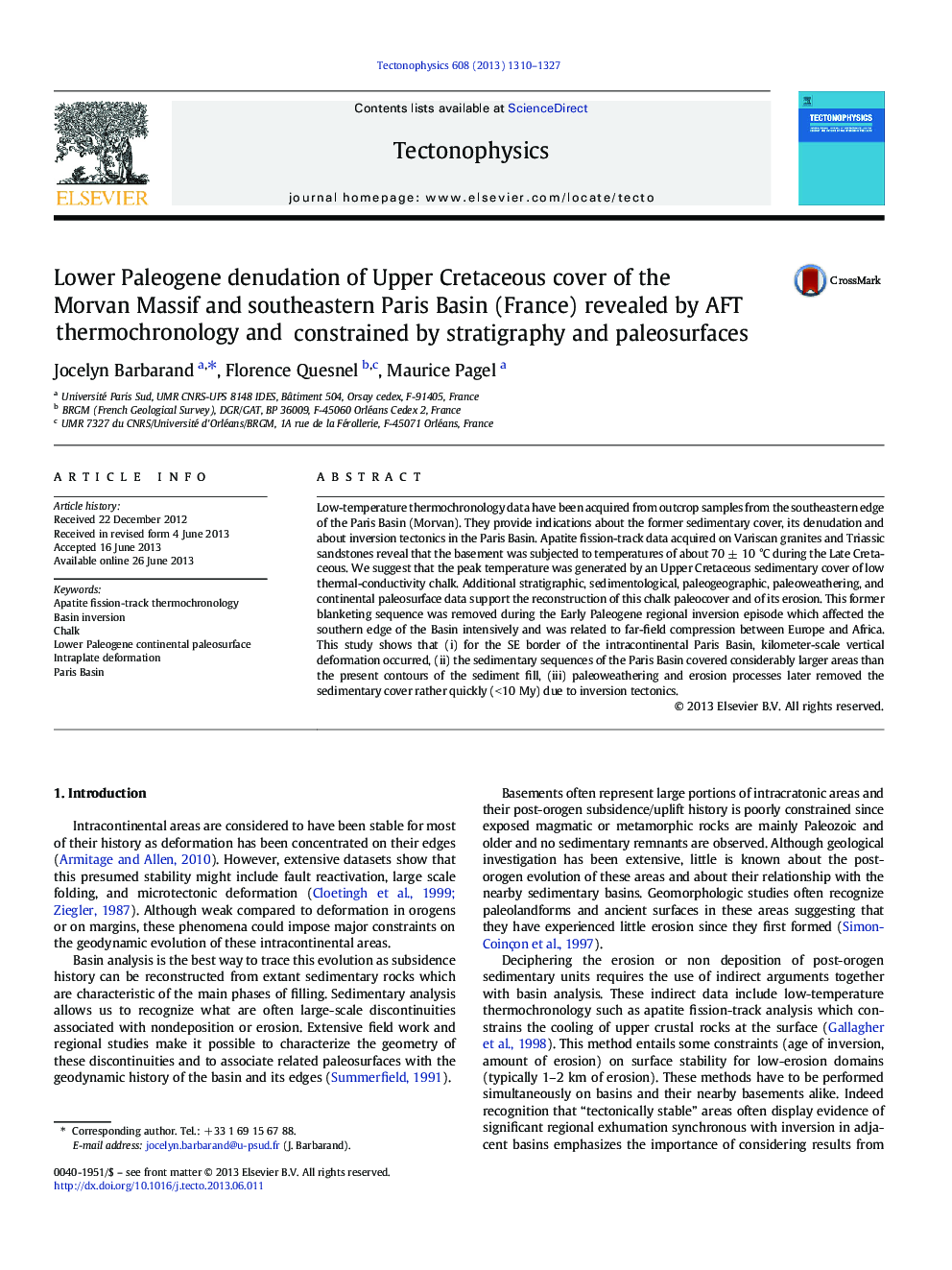| Article ID | Journal | Published Year | Pages | File Type |
|---|---|---|---|---|
| 6434069 | Tectonophysics | 2013 | 18 Pages |
â¢Apatite fission-track analysis of samples from the southern edge of the Paris Basin.â¢Thermal evolution was modeled using stratigraphic and paleoweathering constraints.â¢Massif Central basement was covered by a maximum of 1.7 km of sediments.â¢Part of this cover consisted of Upper Cretaceous chalk.â¢This cover was eroded during the Early Paleogene due to inversion tectonics.
Low-temperature thermochronology data have been acquired from outcrop samples from the southeastern edge of the Paris Basin (Morvan). They provide indications about the former sedimentary cover, its denudation and about inversion tectonics in the Paris Basin. Apatite fission-track data acquired on Variscan granites and Triassic sandstones reveal that the basement was subjected to temperatures of about 70 ± 10 °C during the Late Cretaceous. We suggest that the peak temperature was generated by an Upper Cretaceous sedimentary cover of low thermal-conductivity chalk. Additional stratigraphic, sedimentological, paleogeographic, paleoweathering, and continental paleosurface data support the reconstruction of this chalk paleocover and of its erosion. This former blanketing sequence was removed during the Early Paleogene regional inversion episode which affected the southern edge of the Basin intensively and was related to far-field compression between Europe and Africa. This study shows that (i) for the SE border of the intracontinental Paris Basin, kilometer-scale vertical deformation occurred, (ii) the sedimentary sequences of the Paris Basin covered considerably larger areas than the present contours of the sediment fill, (iii) paleoweathering and erosion processes later removed the sedimentary cover rather quickly (< 10 My) due to inversion tectonics.
